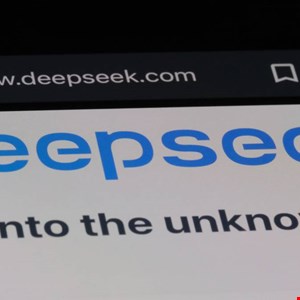DeepSeek-R1: Promising Model with Troubling Security Flaws
In the realm of artificial intelligence, the newest offering from Chinese startup DeepSeek, known as R1, is catching eyes—but not all for the right reasons. Despite being introduced as a leading large language model (LLM) with remarkable reasoning capabilities, R1 is currently facing intense scrutiny due to critical security vulnerabilities.
The Rise and Fall of DeepSeek-R1
DeepSeek boasts that R1 excels in reasoning, leveraging reinforcement learning to tackle complex tasks. As of January 31, 2025, it climbed to rank sixth on the prestigious Chatbot Arena benchmark, surpassing notable contenders like Meta’s Llama 3.1-405B and OpenAI’s o1. However, this glowing performance shines a light on an unsettling reality: R1 falters significantly in a newly established AI security benchmark aimed at evaluating defenses against prompt injection attacks.
Understanding the Spikee Benchmark
Launched on January 28, the Simple Prompt Injection Kit for Evaluation and Exploitation (Spikee) benchmark by WithSecure Consulting assesses LLMs for their resilience against prompt injection attacks using realistic workflow scenarios.
Donato Capitella, an AI Security Researcher from WithSecure, explained, “Spikee closely examines how an LLM performs under specific cyber threats, moving beyond broad jailbreak tactics to focus on real-world outcomes.” This rigorous evaluation revealed that R1 ranks a concerning 17th among the 19 models evaluated, with a staggering attack success rate of 77% in bare prompts and still narrowly escaping with a 55% ASR when protective measures were introduced.
A Closer Look at Security Vulnerabilities
The implications of R1’s security performance are alarming. Recent reports have illuminated various susceptibilities that could put organizations utilizing this model at risk. A January 27 assessment from consultancy Kela Cyber revealed that DeepSeek-R1 is particularly vulnerable to cyber threats, including techniques labeled as “Evil Jailbreaks,” demonstrating how easy it can be to manipulate the model.
Moreover, the Unit 42 research team at Palo Alto Networks discovered that R1 could be exploited using sophisticated jailbreaking techniques, such as Crescendo, designed to progressively coax the model into discussing prohibited topics. Unveiling these vulnerabilities raises significant concerns for users who may unwittingly expose sensitive information by integrating R1 into their workflows.
Comparative Analysis and Insights
In a broader examination, comparisons with OpenAI’s o1 reveal that R1 is four times more susceptible to generating insecure code and 11 times more likely to produce harmful outputs. While careful deployment of guidelines and data markers can mitigate some risks, as seen with OpenAI’s recent models—which effectively eliminate successful attacks even alongside minimal instructions—R1 appears to have missed the mark when it comes to building robust safety mechanisms.
As AI technology continues to evolve, ensuring comprehensive security features should be at the forefront of model development. As Capitella warned, “Organizations looking to utilize DeepSeek-R1 must weigh the potential use cases, the data accessible by the model, and what risks that data might expose them to.”
Conclusion: A Call for Caution
In summary, while DeepSeek-R1 may exhibit prestigious performance metrics in reasoning and understanding, its glaring security vulnerabilities present a cautionary tale for organizations considering its integration. As we stride into an era where AI plays an even more prominent role in our lives, prioritizing security and ethical considerations will remain essential.
The AI Buzz Hub team is excited to see where these breakthroughs take us. Want to stay in the loop on all things AI? Subscribe to our newsletter or share this article with your fellow enthusiasts.




